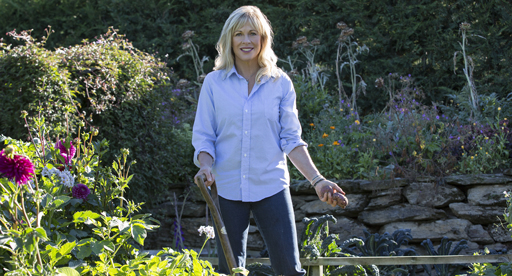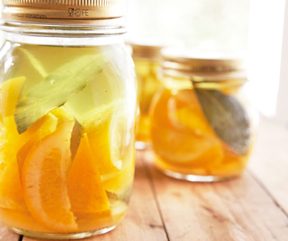
Around this time of the year you can feel the earth start to come alive. There’s always a temptation to get out there and start planting as soon as the air warms up, but over the years I’ve learnt the importance of getting the soil in peak condition first.
Plants won’t thrive if they don’t have the right nutrition (just like us), so I give all my beds a good dig over with compost and a sprinkle of lime (often after winter the soil can be quite acidic). I like to bulk up the organic matter from the compost with sheep pellets, which work so well to condition the soil and bring the worms along. Tui Super Sheep Pellets have the boost of long-life fertiliser in them so they work as a fertiliser as well as soil conditioner.
If I’m planting out small seedlings I always put a handful of vegetable mix in each hole before I plant – it cossets the roots and provides the food those little seedlings need to get going, so they don’t just sit there and sulk.
With the days really starting to lengthen out now, all the vegetables that have held over the winter are going to go to seed over the next month or two, so get harvesting now or you’ll find the centres get hard and woody and all the sweetness disappears – often to be replaced by bitterness as the plant changes its mode into seed production.
The minute I see plants starting to change shape or put up a seed head I harvest them and then store or cook my harvests – if I leave them, they just won’t be any good to eat. There’s also no point planting any seedlings that have overwintered, as these will do exactly the same thing. You need to start afresh with fresh seed and seedlings.
Knowing your climate is key, as many plants will curl up their toes or go straight to seed without even maturing if the nights are too cold. A good dosing of Tui Organic Seaweed Plant Tonic is one of the best ways to help plants manage fluctuations in temperature – it gives the roots the support they need. Right through the growing season I give everything a regular feed of Tui Organic Seaweed Plant Tonic – it’s like a little tonic that makes the plants look happy and grow strong!
Different seeds germinate at different temperatures, and soil warms more slowly than air. If you get a thermometer and insert it about 5cm into the soil you will get a reading of the soil temperature and that will let you know what you can start to plant. It’s a good idea to do this at the same time (the middle of the day is best) over a few days and then average the results.
Back in August you should have been able to plant rocket, broad beans, peas and snow peas, kale, lettuce, bok choy, parsnips, radicchio, radishes and spinach (all these will germinate once the soil temperature is over 5°C).
Once the soil temperature goes over 10°C you can plant bok choy, chinese cabbage, leeks, onions, silverbeet and turnips.
Then after the temperature gets to 15-16°C, which often happens in the north in September, most of the summer vegetables can be planted, including beans, beetroot, broccoli, brussels sprouts, cabbage, carrots, cauliflower, kale, leeks, lettuce, many of the Asian greens, onions, parsnips, peas, radicchio, radishes, spinach, silverbeet and turnips.
Hot-climate vegetables and herbs, such as tomatoes, eggplant, peppers, cucumbers, pumpkins, zucchini, basil corn and melons, all need the soil temperatures to be up around 18-20°C, which is why you need to get them started somewhere warm indoors. I had a hopeless seed set of outdoor basil last season, and my eggplants really came to nothing outdoors – it simply wasn’t warm enough.
Here in Wanaka I’m lucky to have a lot of room in which to grow my veges, but when people ask me what they should plant if they don’t have a lot of room I always say grow the things you like to eat, and especially things that are easy to grow and expensive to buy, such as rocket and salad greens, spring onions and yummy herbs. I always grow broccoli and beets because we eat them so often and I like to know I’m eating organically. And, for value, grow potatoes in bags and tomatoes in pots ¬– they’ll taste so much better than storebought.
As long as you get the soil well prepared, plant at the right temperatures and feed and water, success will be yours!
As the new season swings into action, our palates are keen for lighter, fresher tastes. This is a great time for citrus, with its bright clean tastes and freshness making a welcome addition to both savoury and sweet dishes.
Use the finely grated zest of lemons, limes and oranges to add a vibrant zing to your meals, and the juice to add a fresh, bright flavour to dressings and sauces. These wonderful pickled lemons are a terrific preserve to bring a heady Moroccan flavour to stews sauces and dressings. They are so simple to prepare and keep for months.
Annabel Langbein’s Preserved Lemons
Prep time: 15 mins + freezing time + pickling time
Cook time: Nil
Makes: 1 jar
Ingredients
- 2 lemons
- 2 heaped tsp salt
- juice of 1 lemon
- 1 bay leaf
- grapeseed or similar neutral oil, to cover
Method
- Scrub the lemons well and slice them lengthwise into sixths.
- Freeze the lemon wedges on a tray until rigid.
- Sterilise a medium jar and its metal lid.
- Take the lemons out of the freezer and pack them into the clean jar.
- Add the salt and lemon juice and the bay leaf. Cover with oil.
The pickled lemons will be ready in about a week but will improve over several months. Once you open the jar, you'll need to keep it in the fridge. To use the lemons, scoop out and discard the lemon flesh, then thinly slice the rinds.
Read more of Annabel's guest blogs here
Post a comment
Annabel Langbein's Spring Planting Comments
Love your recipes
lyn bolton
Love your books too!! I have 3 of them and have purchased some for gifts as well ,in the past. Will try your lemons in oil. Great for Xmas presies ! The ones I have made are just in salt but the oil would be a lovely flavour in salads. I guess you could use limes too? Or mixed? Thank you for all your tips.
Dominique
Which is preferably to use for the pickled lemons - iodised salt or common salt _which is what my mother always used when preserving. I look forward to your comment, thanks.
angela potts
Hi Angela, when you say common salt do you mean pickling salt (a finer grain salt with no additives)? If so, you can use either, although you may find that common salt is not so common in New Zealand shops. You may find this helpful: https://en.wikipedia.org/wiki/Pickling_salt Happy pickling! Thanks, Tui Team
jenna